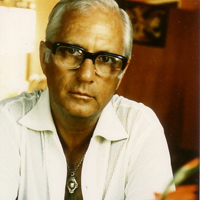 When Lucille Ball first graced television screens in black and white, the gay culture of 1950’s Perth was illusive, an underground community.
When Lucille Ball first graced television screens in black and white, the gay culture of 1950’s Perth was illusive, an underground community.
In the US, poet Allen Ginsberg was penning his ode Howl; the equivalent of flipping the bird to mainstream sexuality just as the beat generation elicited a sexual revolution alongside the liberation of women and African Americans.
In post-war Europe, the homophile movement was gathering steam as gay venues, publications and organisations sprouted up throughout France, the Netherlands and Eastern Scandinavia.
But back on the western coast of Australia, queer Perth still lacked the freedoms and various haunts of their international counterparts.
Places such as the Coffee Pot and the Palace were refuges where LGBT folk of Perth could meet back then.
A 17-year-old Trevor Norton frequented the Coffee Pot during the mid ’70s and said the Coffee Pot was very inclusive.
‘It was for anybody; gay or straight, anyone who wanted a coffee,’ Norton said.
‘…it did have a number of gay and lesbian people there because as a group we would tend to socialise … outside of work.’
Norton described the Coffee Pot as an intimate space; it had small tables and an old record player, quietly playing music in the milieu.
While the Coffee Pot is no longer around, it would stay open till 2am on weeknights and was placed conveniently in downtown Perth on Wellington St.
As well as Norton, Ivan King frequented the Coffee Pot in the ’70s and said it was ‘about the only place to have a cup of coffee.’
‘It was very popular; its popularity came about because it was the only place to go with any sort of sophisticated ambience,’ King said.
King also said there had been an unspoken agreement between the gay and bisexual patrons of the Coffee Pot, a subtle nod of the subversive community.
The Coffee Pot was established by Dutch Indonesian migrants Prada and Rob van der Nagel in the 1950s with the help of openly gay WA author Gerald Glaskin.
Glaskin’s silent input into the Coffee Pot did not emerge until recently when Memorabilia Curator Jo Darbyshire started digging up information about this coffee house.
Initially, Darbyshire was just investigating the significance of bygone tea rooms and coffee houses in Perth but she soon found the Coffee Pot to be a ‘very special place’.
‘I started looking in the 1950s which was when we had an explosion of migrant-run coffee houses,’ Darbyshire said.
After making a public call-out for any information on the cafe, Darbyshire received an enormous response, with calls from as far as London.
But the most intriguing discovery surfaced when she found out that openly gay Gerald Glaskin had been a secret financial donor when the original owners Prada and Rob van der Nagel started the cafe from scratch.
In 1965, Glaskin authored the controversial No End To The Way under his pseudonym Neville Jackson; a novel that was banned in Australia due to its focus on a homosexual love affair in Perth.
While Glaskin’s initial role in the business may have contributed to the level of acceptance for same-sex attracted people, Prada and Rob van der Nagel had also migrated to Australia from gay-friendly Amsterdam; a potential influence.
After World War 2, there had been much sympathy for the gay and bisexual population in cities in Amsterdam following the hostility and persecution of same-sex attracted people from Nazi Germany.
Darbyshire said the importance surrounding the Coffee Pot was due to the little remaining evidence of gay culture from that era.
‘There’s not a lot of recorded information about where gay people would hang out,’ she said.
‘The gay community lost a lot of its history during the ’50s and early ’60s because people couldn’t record anything; they couldn’t keep anything including love letters.’
The accompanying collection on display is an array of memorabilia from the 1950s indigenous dance club, The Coolbaroo Club.
Check out the Coolbaroo Club and the Coffee Pot, Two Extraordinary Places in 1950’s Perth exhibition from October 20 till November 7 in Perth’s Town Hall Foyer.
Benn Dorrington




